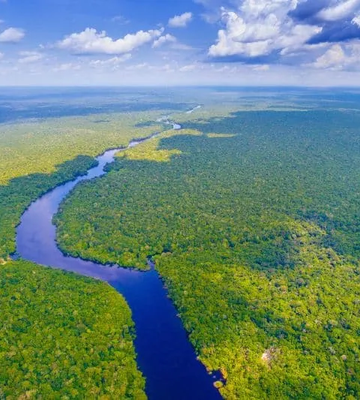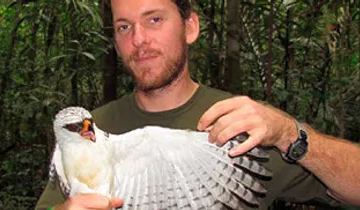
Wolfe Laboratory
Michigan Technological University

Impacts of Climate Change on Songbird Demographics
Climate change can impact birds by altering their food resources and increasing their physiological stress. Understanding how climate influences songbird demographics is essential for identifying climate refugia and developing effective conservation strategies.
Long-term Effects of Climatic Phenomena on Birds
Incremental changes in climate, as well as anomalous climatic phenomenon, affect the demographics of tropical forest birds. My research is focused on uncovering these relationships. One notable aspect is the response of Amazonian bird communities to climate change, particularly in primary rainforest environments. Over several decades, ongoing bird banding efforts in the Central Amazon have shown a decline in bird abundance and shifts in morphological traits. For example, I collaborated with a team of researchers to produce a comprehensive study demonstrating that nearly half of the bird species experienced a significant reduction in body mass. This suggests an adaptive response to increasing temperatures and changing precipitation patterns, possibly to enhance resource economy and survival under new climatic conditions. Similarly, my research on the effects of the El Niño Southern Oscillation (ENSO) on tropical birds in Costa Rica demonstrated that climatic events can have differential impacts based on forest maturity. While mature forests provided some resilience against ENSO-induced changes, young forests experienced significant variations in bird survival rates, highlighting the vulnerability of less established habitats to climatic fluctuations. Additionally, my research on migratory birds in Central America indicated that ENSO events could alter food availability, impacting the condition and survival of different species depending on their dietary habits and ecological niches. Overall, the common theme emerging from this aspect of my research is that climatic phenomena, such as global warming and ENSO, exert substantial and varied influences on bird populations. These effects manifest through changes in abundance, morphology, and survival rates, emphasizing the need to understand and mitigate the impacts of climate change on avian biodiversity. This ongoing research underscores the importance of long-term monitoring and adaptive conservation strategies to safeguard bird species in the face of escalating climatic challenges.
Unraveling the Interplay of Climate Change and Forest Degradation on Tropical Bird Demography
My current NSF-funded research, in collaboration with Dr. David Luther at George Mason University, is focused on developing next-generation demographic models to understand how climate change and forest degradation interact to affect the survival and population growth of central Amazonian birds. By integrating long-term climate and forest regeneration data, we aim to elucidate the complex dynamics between environmental changes and avian demographics in this region. Our research includes a bold watering experiment, in collaboration with Dr. Cintia Cornelius Frische, Universidade Federal do Amazonas, where we are experimentally irrigating terra firme forest to verify the leading hypothetical proximate mechanism, understory drying, responsible for long-term bird declines documented at the Biological Dynamics of Forest Fragments Project (BDFFP). This experiment will provide critical insights into how artificial cooling and moistening of microclimates can enhance avian diversity and resilience in degraded tropical forests. This approach aims to advance our understanding of the ecological processes driving species loss in lowland tropical rainforests, ultimately informing conservation strategies under projected climate change scenarios.
Collaborative Effort to Understand Climate Change Impacts on Tropical Bird Demography
In collaboration with numerous colleagues, we have established a long-term tropical bird demographic working group, bringing together extensive bird banding datasets from lowland and wet neotropical forests, each spanning at least 20 years. Our objective is to harmonize these datasets with long-term climate estimates at each site to understand how incremental and episodic climatic changes affect tropical bird demography. The working group includes Dr. John Blake (University of Florida), Jeremy Collings (University of Oregon), Dr. Goncalo Ferraz (Universidade do Rio Grande do Sul), Dr. Bette Loiselle (University of Florida), Dr. David Luther (George Mason University), Dr. Corey Tarwater (University of Wyoming), and Mauricio Ugarte Lewis (Universidad Nacional de San Agustín de Arequipa). By integrating these comprehensive datasets and focusing on climatic influences, we aim to radically advance our understanding of how climate change impacts tropical bird populations, ultimately identifying the drivers behind climate-resilient and sensitive bird populations.






